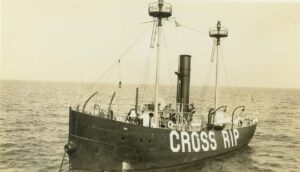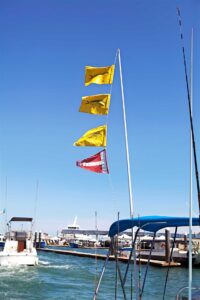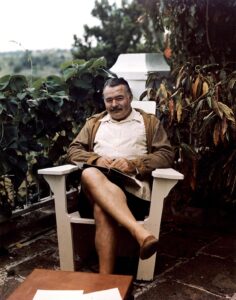One of the most fascinating bits of history is the role that beaver fur pelts played in international trade and, ultimately, the founding of Astoria, Oregon. Today, with our different sensibilities about wearing animal fur, it is difficult to imagine the importance of beaver fur in everyday life hundreds of years ago.
Although fur pelts from bears, fox, ermine and sable had long been used to make warm, long-lasting clothing, beaver fur was prized for making hats. Throughout Europe, demand for hats made of beaver felt was so great that by 1600, the European beaver was nearly extinct.
Felting is the process that turns fur fibers into a pliable fabric. First the fur is removed from the animal skin. This loose hair is then wetted with hot water, matted together and pressed through rollers to create felt. Unfortunately for the beaver, their downy wool undercoat made the softest and most desirable felt for hat making.
During the 17th century, the French, Dutch and British had access to the millions of beavers living in the Canadian and Great Lakes territories of North America. Those beavers were trapped and skinned and their pelts sent by ship back to Europe. The volume of hats made from beaver fur was staggering. From England alone, during 1700 to 1770, 21 million hats were exported to continental Europe. The best trappers in North America were Native Americans, and each colonial power formed alliances with different tribal nations for trading guns and steel tools in exchange for pelts. These political and economic pacts also swept the tribes into the vortex of colonial warfare, first in the French and Indian War, and then the Revolutionary War.
The American Revolution had formally ended with the Treaty of Paris in 1783, but it wasn’t until 1794 that the loose ends of our new relationship with Great Britain were tidied up with the Jay Treaty. One of the outcomes of this treaty was that our former oppressor was granted most favored nation trading status. And one entrepreneur, Johann Jakob Astor, was poised to take advantage of these new commercial opportunities.
In 1779, Astor emigrated from Germany to England and anglicized his name to John Jacob. After the Revolutionary War ended, Astor decided to move from London to New York. He soon became a fur trader in the American Northwest Territories (today’s upper Midwest), working with Indian and Canadian traders.
With the passage of the Jay Treaty, Astor realized he had a competitive edge to import furs from Montreal and sell them in Europe. By 1800, John Jacob Astor was worth a quarter of a million dollars, which translates into $5 million of purchasing power in today’s economy. Although furs were his primary interest, Astor soon became interested in the burgeoning China trade. He sent a trading ship to South China to the province of Guangzhou (Canton), which returned with enough marketable goods to make a large profit, which he promptly invested in 70 acres of what is now mid-Manhattan real estate.
When Lewis and Clark reached the mouth of the Columbia River in 1805, they established an American presence in the Pacific Northwest. This also happened to be where the best remaining fur-bearing animals in North America could be trapped. Astor was now ready to control the North American fur trade using access to the Canadian and American furs west of the Rockies via the Columbia River in Oregon country. He wanted to create a global trading system based on the furs of the Pacific Northwest.
Astor’s grand trading scheme began with beads and blankets sent on his ships from New York City to Oregon to be used as trading wampum with native tribes for their fur pelts. The ships, now laden with furs, were to be sailed across the Pacific Ocean to the international trading port of Canton. There the furs were to be traded for porcelain and tea. The Chinese goods would be shipped across the Indian Ocean and onto London, where they would be sold at a handsome profit. British manufactured goods, which were in high demand in the United States, would then be loaded into the cargo holds for the final leg of the journey across the Atlantic Ocean and back to New York City. Then this round-the-world trading cycle would be repeated.
To make his plan a reality, Astor first needed a base of operation in Oregon. To that end, he incorporated the Pacific Fur Company with the express purpose of mounting two expeditions, one by sea and one by land, to set up an outpost at the mouth of the Columbia River. The ship Tonquin departed on the oceanic route from New York on September 8, 1810, while the overland party left from St. Louis on October 21. The seafarers were first to arrive at the mouth of the Columbia River on April 12, 1811. They built a rough trading post and log stockade for protection. They christened it Fort Astoria, and the fort became the first permanent U.S. settlement on the Pacific coast of North America. The overland expedition finally arrived at Fort Astoria nine months later, and the route that they blazed later became the Oregon Trail, bringing emigrants westward in their covered wagons.
Unfortunately for Astor, the War of 1812 intervened and disrupted his plans for Fort Astoria. The fort was taken over by a British fur trading company and renamed Fort George. By 1830, Astor foresaw that fashions were changing and the demand for furs and beaver hats was on the decline. He soon sold all his interests in his fur companies and invested heavily in New York City real estate. When he died in 1848, he was the wealthiest person in the United States.
But what of Fort Astoria? A port city slowly grew up around the fort and kept the name Astoria. In 1847, the first post office west of the Rockies was established there. Today, Astoria has a very busy commercial harbor and is a popular cruise ship port.
If you are coming by sea, remember that the Columbia River Bar can be treacherous, with conditions that change very quickly. Currents from five to eight knots and large standing and breaking waves are all possible where the river enters the Pacific Ocean, and it will test your boat-handling skills. You will be well rewarded though, as visiting boaters can tour the Bumble Bee Cannery Museum and the nearby Columbia River Maritime Museum, which offer unique perspectives on the history of the Pacific Northwest.
Capt. Jeff Werner has been in the yachting industry for over 25 years. In addition to working as a captain on private and charter yachts, both sail and power, he is a certified instructor for the USCG, US Sailing, RYA and the MCA. He is also the Diesel Doctor, helping to keep your yacht’s fuel in optimal condition for peak performance. For more information, call 239-246-6810, or visit MyDieselDoctor.com. All Marinalife members receive a 10% discount on purchases of equipment, products and supplies from Diesel Doctor.





